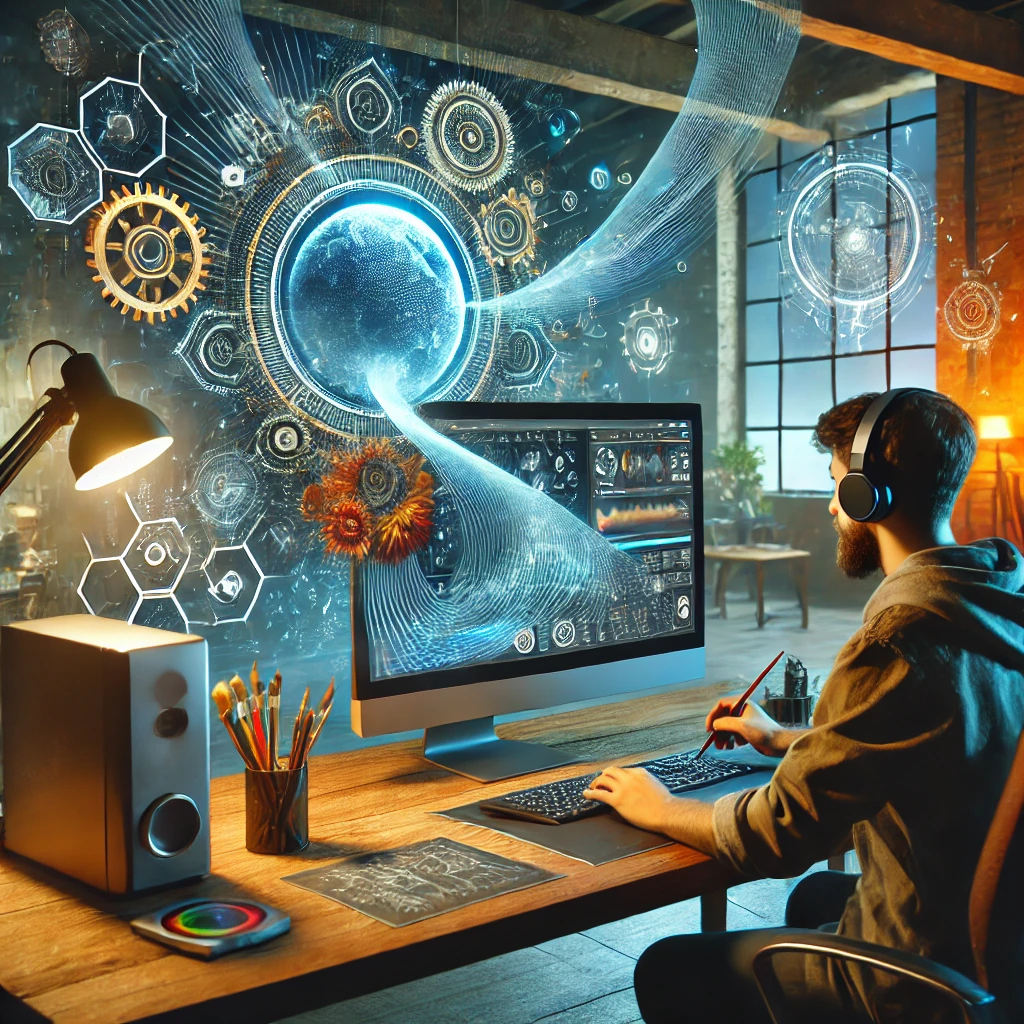The intersection of artificial intelligence (AI) and art is opening up unprecedented opportunities for creativity and innovation. AI technologies are not only changing the way we create art but also expanding the boundaries of what is possible in the artistic realm. From generating intricate designs to creating entirely new art forms, AI is revolutionizing the art world.
AI as a Creative Partner
AI tools have become invaluable partners for artists, assisting in the creative process by generating ideas, enhancing techniques, and providing new perspectives. For example, tools like DeepArt and RunwayML allow artists to transform photos into masterpieces by applying the styles of famous artists. These AI applications analyze images and mimic artistic techniques, producing stunning results that blend human creativity with machine precision.
Enhancing Artistic Techniques
AI-driven software enhances traditional artistic techniques by offering features such as predictive texturing, automated colorization, and intelligent brush strokes. These capabilities enable artists to experiment with different styles and methods, pushing the boundaries of their creativity. Tools like Adobe Sensei and Corel Painter utilize AI to provide artists with intuitive tools that adapt to their unique styles, making the creative process more fluid and efficient.
Democratizing Art Creation
One of the most significant impacts of AI in art is its ability to democratize art creation. AI tools are making it easier for individuals without formal training to create professional-quality art. Applications like Artbreeder and DALL-E allow users to generate complex images and animations with simple inputs, lowering the barrier to entry and enabling more people to express their creativity.
Creating New Art Forms
AI is not just enhancing existing artistic techniques but also creating entirely new art forms. Generative adversarial networks (GANs) are used to produce unique pieces of digital art that are not only visually striking but also conceptually innovative. Artists are using AI to explore new dimensions of creativity, producing works that challenge traditional notions of art.
AI in Music and Literature
Beyond visual arts, AI is making waves in music and literature. AI algorithms can compose music, write poetry, and generate stories, providing new tools for musicians and writers. Applications like OpenAI’s MuseNet and GPT-3 are pushing the boundaries of what AI can achieve in the creative arts, offering new ways to compose and create.
Ethical Considerations and the Future of AI Art
As AI continues to play a larger role in art creation, ethical considerations come to the forefront. Issues such as authorship, originality, and the impact on traditional artists are important topics of discussion. However, the future of AI in art is promising, with the potential to inspire new forms of expression and broaden the scope of artistic possibilities.
Conclusion
AI is transforming the art world by enabling new forms of creativity, enhancing artistic techniques, and democratizing access to art creation tools. At Fastcontentai.com, we are at the forefront of this revolution, developing AI solutions that empower artists and expand the boundaries of creativity. Explore our AI tools and discover how they can enhance your artistic journey.
Tags: AI art creation, AI creativity tools, digital art, artistic innovation, technology in art

